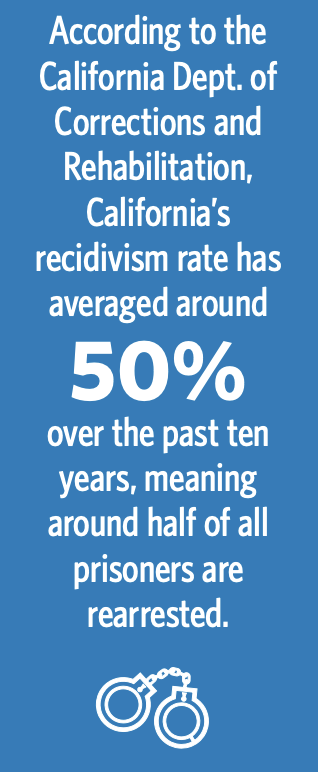It's Time For
Common Sense Solutions on Safety
MATT MAHAN WILL BRING COMMON SENSE AND ACCOUNTABILITY to one of San Jose’s most pressing problems — crime. His plan will focus on proven and cost-effective ways to increase safety in our neighborhoods by fully staffing our police force, targeting serious and violent offenders, and focusing on services including job training, drug treatment, mental healthcare and most of all — investing in our children.
1
If we cannot lower crime steadily, end the practice of automatic
raises for politicians and top department heads. Real change requires real accountability and no issue is more fundamental than public safety. We don’t need a hollow crime plan — we need results— and that starts by holding ourselves, and everyone, accountable.
2
Target the small number of repeat and violent offenders. Some studies show that just a small number of offenders commit the majority of crimes. We need to target these individuals and make sure they are on the path to stable employment and sobriety (if they are suffering from addiction) or on the way to prison or jail. This should be a part of the larger effort to use data to deploy our law enforcement resources more effectively
3
Hire more police and bring the San Jose Police Department up
to full staffing. At the same time, hire more Community Service Officers so that police spend more time in the community focused on serious and violent crimes and less time on paperwork. San Jose is one of the most thinly staffed police departments in the country and in the next four years we should hire at least 200 new sworn officers and 100 community service officers who focus on lower level, non-violent crime so that sworn officers can focus on violent crime.

Recent research shows that increased police staffing can help prevent crime: each additional officer reduces crime by 1.3 violent crimes and 4.2 property crimes per year, primarily through deterrence.
(Public Policy Institute of California)
It is just common sense— we can hire more officers and help pay for it by reducing our growing overtime bill. That means a safer city and smarter use of our resources.
Our police department has not regained pre-recession staffing levels.


4
Change the practice of releasing serious — and frequently violent — offenders into the community pre-trial even after they have repeatedly violated the terms of their pretrial release. Currently, roughly 50% of arrestees who are released back into the community pre-trial are violating the terms of their release by re-offending or failing to appear in court. The Santa Clara County jail is nearly half empty while police report individuals being rearrested ten times or more — and still not being kept in jail. We need to keep serious and potentially violent individuals in jail.
5
Approach lowering crime from every direction. It is cost-effective, it keeps people safe and it prevents crime by including job training, support for hiring the formerly incarcerated, drug treatment and expanded mental health care in our crime-fighting toolbox. Many studies show this works in the short term. In the long-term, we can help interrupt the cycle of crime by focusing on protecting and educating children. Studies show that 44.7% of inmates experienced childhood trauma and 70% of inmates can’t read at a 4th grade level. We need to direct police and non-police resources to protecting children from crime. And while the San Jose city government does not run our schools, that is no excuse for inaction. A comprehensive partnership to keep children in school and make sure they succeed in school is one of the most proven tools in lowering crime in the long-run — and it is one of the most cost effective.
6
Actually, finally, and aggressively implement “Laura’s Law” so those who are a danger to themselves or others because of mental health issues are required to receive treatment. We also need to advocate to expand conservatorship laws to protect those who are most at risk.

Through implementing Laura’s Law, San Francisco saved more than $400,000 a month in city services:
an 83% decrease
At least 66% of the participants voluntarily stayed in treatment programs.
About 54% of the participants achieved “positive status outcomes” through successful treatment and discharge.

of National Drug Threat Assessment respondents nationwide reported methamphetamine as the drug that takes up the most law enforcement resources.
reported methamphetamine as the drug that most contributes to violent crime.
95%
decrease in jail admissions for public intoxication since 2010.
(National Library of Medicine)
7
Work to change harmful state laws. Current law allows for an offender to steal up to $950 worth of goods — as many times as they’d like — without being charged with a felony. We don’t need to return to mass incarceration — but the threat of a felony conviction is a proven tool to require treatment, job training, and other proven ways to help people break the cycle of crime and violence and get back on the right track.
8
Police report a significant driver in many crimes is methamphetamine addiction. We need to focus on meth addiction, working to open up more drug treatment facilities and requiring those in the criminal justice system to enter treatment as a condition of pretrial release or parole. And if doctors and a judge determine a person is a danger to themselves or others — then treatment should be required.
9
Greatly expand use of a locked, safe and monitored sobering center with enough beds for the offenders who require it so offenders are not released into the community while they are still drunk or on drugs. That happens now. Use this sobering center as a portal into longer term treatment.
10
Work with other mayors and leaders to change federal law that still allows stolen goods to be “fenced” on some social platforms with impunity. We can’t let criminals use the internet to offload their stolen goods.
11
As the capital of Silicon Valley, we can use technology, without violating anyone’s rights, in a more effective way. License plate readers outside of shopping malls and other places where we have seen “smash and grab” robberies are just one way we can both deter crime and apprehend individuals who commit crimes. These cameras also deter street racing and sideshows. Other technologies — like simple home doorbell cameras — are a crucial tool in preventing and solving crimes, and we should make sure they are available in every community — particularly those communities hardest hit by crime which are frequently the lowest income neighborhoods.
KEEPING OUR FAMILIES SAFE IS ONE OF OUR TOUGHEST AND MOST IMPORTANT CHALLENGES — but it is solvable if we focus on common sense, accountability and proven solutions.
Join us for Common Sense on Safety




